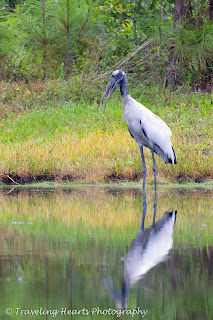If you have just stumbled across this Tutorial for the first time, it would be a good idea to start at the beginning
here.
Manual Photography {Wrapping Up}
Now that we have covered all the different components of exposure and how to shoot in manual ~ it is time for you to use what you have learned.
I wanted to share with you a great tool to print or copy.
Photography Field Guide ~ This is super helpful and a cheat sheet of sorts to use while you are out with your camera (and not near books, wifi, or internet)
General Walkthrough of How I Typically Shoot
#1) First I think about my
ISO...
- is it cloudy? (higher ISO)
- is it sunny? (lower ISO)
- am I shooting indoors? (much higher ISO)
- will I need a tripod? (lower ISO but will cause a slower shutter as well)
- do I care about grain (higher ISO)?
#2) Next I ask myself what is most important to my photograph?
Shutter Speed or
Aperture? Whichever is most important to your photograph, adjust that one first.
- If Shutter Speed
- Freezing Movement? -> Fast shutter speed
- Blurring Movement? -> Slow shutter speed
- If Aperture
- Blurred Background -> Large Aperture -> Small f/stop # (ex f/2.8)
- Crisp and Detailed Background -> Small Aperture -> Large f/stop # (ex f/16)
Example
I took this photo while I was having my morning coffee on my balcony. This was the last morning I had in my Virginia home before the packers came and our move to Florida started. The sun was rising behind the trees and I knew that if I used a small f/stop number (larger aperture) I would be able to create bokeh with the sunlight (blurred out of focus orbs of light that occur with a small f/stop number).
It was still on the dark side, so I set my ISO to 200. I then set my f/stop as low as it would go with the lens I was using (happened to be f/5.6). From there I just adjusted my shutter speed until my cursor was at the "0" hash mark. (Remember the
light meter?)
I especially like this photo because it captures the emotion of my last morning coffee. I also loved that the bokeh looks like little sparkles coming out of my cup <3
ISO 200 ~ 53mm ~ f/5.6 ~ 1/400 sec
© Corrie M Avila
Can you understand the settings below my photo now? Does it make sense? The only thing we haven't gone over is the second number and that is your focal length. Basically just the distance your lens is set to. On a telephoto lens it will change, on a fixed lens, it will remain the same. This is more of just documentation and does not have anything to do with shooting in manual. Knowing that the lens was at 53mm, you would know that I was standing pretty close to the mug.
Some Final Tips and Reminders
* Don't forget that all three components (ISO, aperture, shutter speed) interact with each other. When you adjust one, it affects the rest. Remember the
graph from early on in the tutorials?
* If you are having trouble knowing where to start, put your camera in "P" mode and see what the camera says the settings should be. That is a good starting place until you get more comfortable finding your settings from scratch. But don't forget to switch back over to Manual so that you have the control!
* When learning Manual Photography, go easy on yourself and practice on something that does not move ~ you will have a much easier time shooting and can just focus on the camera rather than the subject running away :)
* Finally, to avoid photos that are blurry from your hand shaking, do not go slower than 1/60 sec on your shutter speed without a tripod. If your settings are telling you that you are slower than that, it is time to bump up your ISO a bit or lower your f/stop number (aperture).
I've already gotten some great feedback from this tutorial series and I'm excited to hear from you!! Has this helped you? Do you still have questions? Please reply to this blog post with your questions/comments and I will put together a follow-up blog post answering them. I know this is a hard concept to get and to wrap your head around, but I promise, keep working at it and you WILL begin to understand!
Capturing the Moment,
Corrie <3



























































